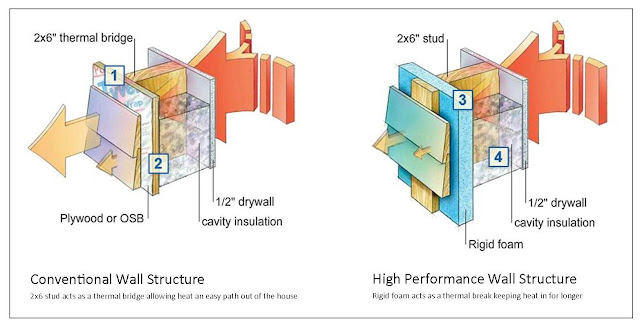 |
| It's beginning to look a lot like Christmas...again! |
 |
| 8½ inches fallen in 7 hours...and still counting! |
| Let's just heat the great outdoors with that thermal bridging! |
Just goes to show that energy efficiency can, literally, go right out the window, or wall, or floor if thermal bridges are not dealt with properly. Here we thought we were building a very energy efficient addition 2 years ago. Today's snow day certainly shot down those beliefs. This is very concrete proof that conventional building techniques have a long way to go to live up to their energy efficiency claims. Eliminating thermal bridging is one of the most important characteristics of a passive house. I always understood the concept. Now I see it.
This kind of heat loss will not happen in a passive house. Insulating a passive house takes thermal bridges out of the equation and heat then remains inside the house longer, rather than finding its way easily to the outdoors.
 |
| A little extra, well-placed, insulation can reduce heating (and cooling) requirements significantly.
Graphic thanks to Fine Home Building
|
Luckily, we will not be experiencing the kind of heat losses in our new house that you see in the above photo of our current house. We can thank the wall anatomy details designed specifically for Casa Tortuga. You will notice several extra layers making up the super-insulated wall structure of this passive house. Thermal bridging is eliminated, therefore eliminating the heat losses we are seeing now in our city house.
| Wall anatomy of Passive House Casa Tortuga.
Copyright © 2013 Vert Design, Chris Straka
|
How all the layers go together. That's a lot of insulation!
Copyright © 2013 Vert Design, Chris Straka
|
Now that looks like a really warm and cozy house. I can't wait!
Well, it's still snowing after all the time it has taken to write this post. Maybe it's time to go tackle some of the thigh-high drifts out there. Ras gave up when she saw the snow plow's contribution at the end of the driveway. It's time for me to put my 9 layers of insulation on and go out to brave the windy, wintery, white stuff! Ugh!!
Cheers!
Mimi
